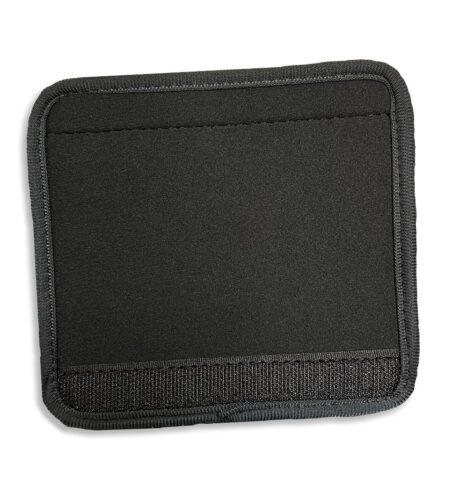How Vagus Nerve Stimulation Therapy Helps Epilepsy
A procedure called vagus nerve stimulation (VNS) may be helpful for patients who suffer from epilepsy. The vagus nerve is called a cranial nerve because it originates in the brain. This nerve controls involuntary bodily functions, like motor functions in the diaphragm and stomach, heart functions and ear and tongue sensory functions.
What Is Vagus Nerve Stimulation?
When the medical procedure called vagus nerve stimulation (VNS) is done, mild electrical pulses are sent by way of the vagus nerve to stimulate the brain. A device similar to a pacemaker is implanted, and the pulses originate from the device. VNS treatments are currently limited to epileptic patients or patients who suffer from severe depression.
Vagus Nerve Stimulation and Epilepsy
VNS is used to reduce the severity of seizures and to decrease the duration and number of seizures in epileptic patients. It is also used to shorten the recovery time it takes to rebound after a seizure.
Twenty years ago, the United States Food and Drug Administration (FDA) approved use of VNS as a treatment for epileptic seizures. Doctors will usually try VNS after a patient has unsuccessfully used anti-epileptic drugs (AEDs), meaning the AEDs have not controlled seizures. In these cases, VNS is then used in conjunction with the medications. Some patients are able to decrease their medication dosage over time. VNS is also used in patient who cannot undergo brain surgery for a variety of reasons. VNS is only successful in some patients.
Patients who are receiving other forms of brain stimulation (like deep brain stimulation) or patients with a heart arrhythmia are not good candidates for VNS. The word “vagus” means “wandering” in Latin, and that is exactly what this nerve does—it wanders through the chest and abdomen and connects to most major organs. That’s why patients with lung problems or stomach disorders are sometimes not good VNS candidates.
How Is The Surgery Done?
The patient is placed under general anesthesia, and the 1.5-inch diameter device is implanted in the chest by a neurosurgeon. The device is similar in size and function to a pacemaker; in fact, VNS devices have been referred to as the “pacemaker for the brain”. The device is round and flat, similar in size to a silver dollar coin.
One small incision is made on the left side of the chest to implant the device. Another small incision is made on the left lower neck to place the flexible wire that connects the device to the vagus nerve. The wire is wrapped around the vagus nerve to provide stimulation. No surgery is done on the brain itself. Surgical time is usually anywhere from 45 to 90 minutes. Some models can be activated right in the operating room, but with other models, the neurologist will activate the device about four weeks after surgery.
The device is programmable, and the neurologist can program it using a small computer in his or her office. The doctor will set both the duration of pulses as well as the pulse strength, usually starting at a lower level, then ramping it up to suit the individual patient. These devices are programmable to stimulate for a certain period of time, and “rest” for a certain amount of time. The doctor can program it to pulse for one minute, then be off for five minutes, for example.
Most devices come with a magnetic wand-like device that allows the patient to self-activate the stimulator device. For example, people with warnings (auras) before their seizures activate the stimulator to stop or shorten the seizure at its onset. Waving the wand over the device creates an extra stimulation burst.
Side Effects
Patients typically are allowed to go home the same day of surgery, but in some cases, might be kept for an overnight hospital stay for observation.
Surgical side effects are minor: pain and inflammation at the surgical site, infection and nearby nerve damage or pinching. The battery in the device lasts up to 15 years, and is replaced by making a small incision in the chest wall. Once the device is activated, the patient doesn’t feel anything—they aren’t even aware that the device is in operation. Patients can have side effects that include:
- Throat or neck pain, hoarseness, voice changes and coughing
- Headache
- Insomnia
- Muscle twitches
Abnormal side effects include:
- Painful or irregular stimulation pulses
- Breathing or swallowing difficulty (including choking)
- Extreme drowsiness or loss of consciousness
- Constantly hoarse voice
- Heart rate changes
Any abnormal side effects should be immediately reported to your doctor.
People with the implanted device need to notify doctors before doing medical tests like magnetic resonance imaging (MRI) or before undergoing surgery that involves any additional implanted devices.
There is exciting research on the horizon for a VNS device that does not have to be implanted. Instead, the patient just holds the device to the neck to stimulate the vagus nerve. It’s another advancement for epilepsy.
Have you tried Vagus Nerve Stimulation Therapy? Tell us about your experience by dropping us an email on [email protected] and don’t forget to follow us on Facebook and Twitter.


 Guardian Soft Special Needs Helmet
Guardian Soft Special Needs Helmet Locking Chin Strap For Guardian Helmets
Locking Chin Strap For Guardian Helmets

